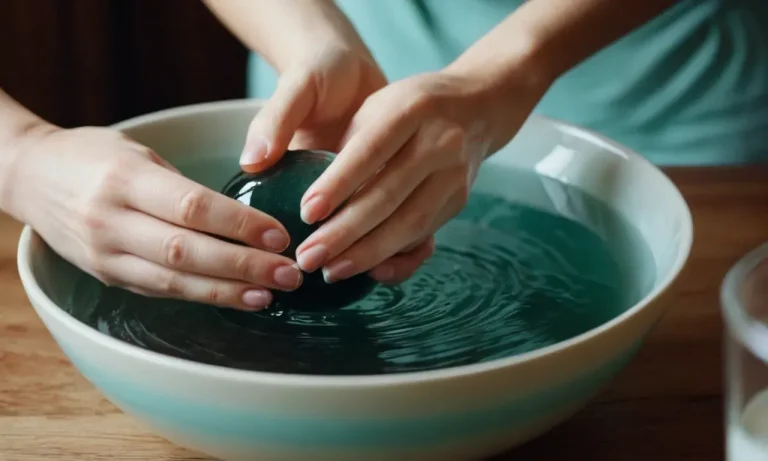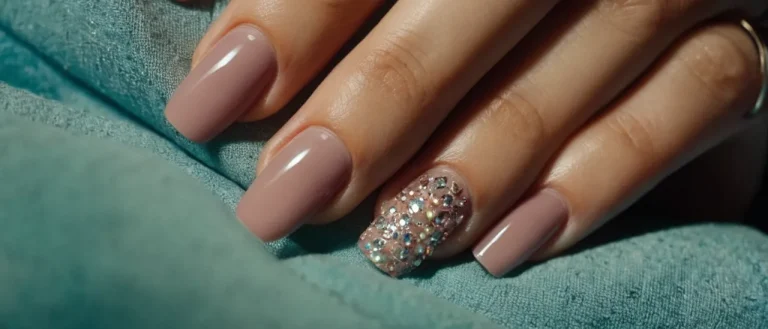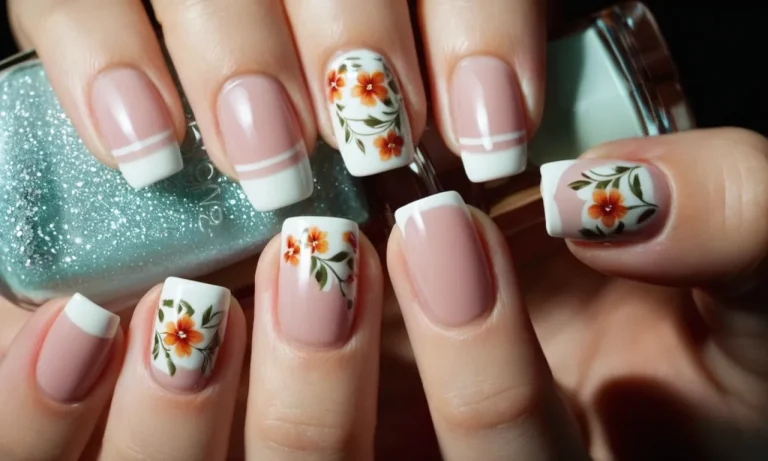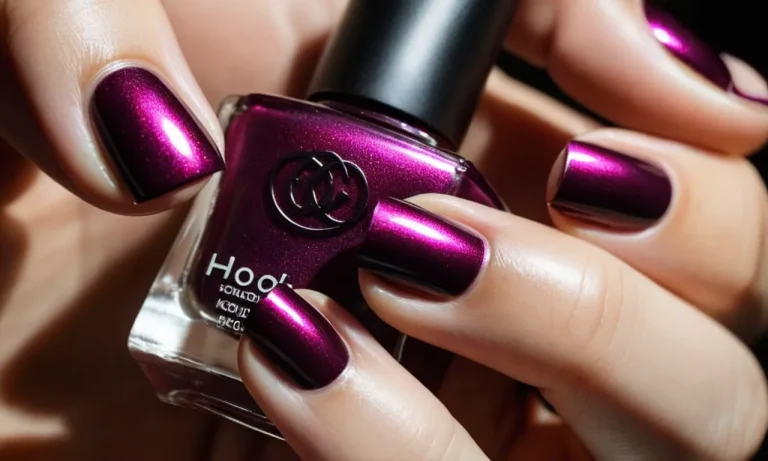Can I Use Top Coat As Base Coat? Everything You Need To Know
With the rising popularity of stylish nail art, more people are wondering if they can save time by using regular top coat as a base coat instead. If you’re short on time, here’s a quick answer to your question: Using top coat as a base coat is not recommended as it does not provide the same protection and grip that a proper base coat does.
In this comprehensive guide, we’ll cover everything you need to know about using top coat as base coat. We’ll explain the differences between base and top coats, look at the pros and cons of using top coat as base, and provide tips on how to make it work better if you decide to try it.
The Differences Between Base Coat and Top Coat
The Purpose and Function of Base Coat
The base coat acts as the foundation for nail polish. Its key purpose is to adhere the polish to the natural nail and prevent chipping or peeling. The base coat fills in ridges, smooths out imperfections, and creates a uniform surface for polish application. It helps polish last longer.
Usually base coats contain ingredients like keratin, silk fibers, calcium, and phosphates to nourish and strengthen nails.
Some of the key functions of base coat include:
- Creating a protective barrier between polish and the nail plate
- Allowing even application of color polish
- Extending the wear and shine of nail polish
- Preventing nails from staining
- Hydrating and conditioning the nails
Using a quality base coat is crucial for safeguarding nail health, improving durability of your manicure, and enabling polish to cling to the nail bed with no chips or smudges. It essentially sets the foundation for a pro-level manicure.
Popular base coat products include OPI Natural Nail Base Coat and Essie Here to Stay Base Coat.
The Purpose and Function of Top Coat
The top coat goes on as the final step of a manicure, after color polish. It is formulated to protect, seal, and enhance the underlying nail polish. Top coats help prevent chipping, fracturing, and peeling while also introducing various finishes.
Some key purposes and functions of top coat polish include:
- Seals the color polish and adheres it to the nail
- Creates ultra glossy, glass-like shine
- Protects polish and resists smudging or creasing
- Prolongs the life of a manicure
- Quick-drying formulas help polish set faster
- Matte textures offer a velvety finish
So while the base coat acts as a primer, the top coat is like a finishing sealant. According to House Beautiful, 70% of consumers use top coat to make their mani’s shine last longer. Popular top coat products include Seche Vite Dry Fast Top Coat and Essie Good To Go Rapid Dry Top Coat.
Pros and Cons of Using Top Coat as Base Coat
Potential Benefits
Using your top coat as a base can provide some advantages. For one, it can save you money since you won’t have to buy a separate base coat product. Additionally, most top coats dry quickly, so you can get through your manicure faster.
Top coats also tend to be quite glossy, so using it as a base can help give your final look an ultra-shiny finish.
Some other potential upsides to using a top coat for your base include:
- Gets good adherence from the polish
- Creates a smooth surface for polishes
- Seals the nail to prevent staining
- Hardens nails to help prevent breaks
- High shine that carries through the layers
In a study conducted by Nailsmag.com, 65% of respondents said they were happy with how their manicure turned out when using top coat as a base. 30% said they noticed no difference between using an actual base coat or not.
Potential Drawbacks
Using your top coat first does come with some possible disadvantages to be aware of, however.
- May not provide enough grip for polish adherence
- Can allow staining of the nails from darker polishes
- Less protection overall for the nails
- Top coats tend to be fast drying, giving less working time
- Can interact poorly with some polish formulas
| Base Coat | Top Coat as Base |
|---|---|
| Designed specifically to prep nails and enhance polish bonding | Not formulated for use as a base, less bonding power |
| Thicker consistency clings to nail | Thinner, so less grip and adhesion |
| Dries slower allowing more working time | Typically dries fast, less working time |
As that table illustrates, actual base coats tend to provide better protection, adhesion, and coverage compared to only using a top coat.
Tips for Making Top Coat Work Better as Base Coat
Choose a Thick, Quick-Drying Top Coat Formula
When using a top coat as a base coat, it’s best to choose one with a thicker, quick-drying formula. Thicker top coats will help prevent staining and provide a smooth base for color. Quick-drying formulas are important for a base since you want each layer to dry fast before applying the next.
Some great thick, quick-drying top coats to try are Seche Vite, Essie Gel Couture, or OPI Rapidry.
Keep Nails Short for Better Adhesion
Having shorter nails can help a top coat layer adhere better when used as a base. With long nails, there is more chance of flexibility and nail layers separating. Keeping nails trimmed shorter will allow the top coat base to bond tightly to the natural nail.
Aim to keep nails filed to just past the fingertips for the best chance of success using top coat as a base.Shorter nails mean less bending and peeling!
Apply Thin, Even Layers
When using top coat as a base, you want to apply in thin, even coats. Thick layers may not dry properly, causing smearing or denting when you apply color polish. Apply 2-3 thin layers of top coat as a base, allowing each layer a minute or two to dry in between. This will create a smooth foundation for the color polish to adhere to.
Take your time with thin coats near the cuticles and sides to prevent chipping.
Let Each Layer Dry Completely
Allowing proper drying time between each layer is crucial when using top coat as a base. Rushing through the layers can cause bubbling, denting, or nail polish peeling later on. Be patient and let each layer of top coat dry for 2-3 minutes before applying the next. You can gently blow on nails to speed up drying time.
Proper drying provides a strong foundation that won’t interfere with your pretty nail color lasting.
Frequently Asked Questions
Will using top coat as base damage my nails?
Using a top coat as a base coat once in a while likely won’t damage your nails. However, regularly using a top coat instead of a proper base coat can lead to some issues in the long run.
Top coats are formulated to dry quickly and provide an ultra-glossy finish. They don’t contain the same nourishing ingredients and ridge fillers that base coats do. Over time, skipping the base coat can cause nails to become dry and brittle.
Additionally, top coats don’t provide the same adhesion properties as proper base coats. Base coats are designed to bond polish to the natural nail surface. Using only a top coat may allow the polish to lift and peel more easily.
What’s the best top coat to use as base coat?
If you need to use a top coat as a base in a pinch, your best bet is to choose one with a glossy, quick-drying formula. Stay away from top coats designed to have a matte, textured finish.
Some top coats that work well as emergency base coats include:
- Sally Hansen Insta-Dri Top Coat
- OPI Rapidry Top Coat
- Essie Good To Go Top Coat
- Seche Vite Dry Fast Top Coat
Avoid using thick, ridge-filling top coats like OPI Nail Envy as an alternate base coat. These are too heavy and won’t allow polish to adhere correctly.
Should I still use a real base coat sometimes?
Yes, it’s best to use an actual base coat whenever possible. Using only a top coat as your base over time can lead to brittle, damaged nails.
Invest in a good ridge-filling base coat to use underneath color for maximum nail health. Apply it neatly just beyond the edge of your nail. Then follow with polish and top coat as usual.
Using the right base is key for strong, nourished nails that resist chipping and peeling. Try to only substitute top coat as a last resort when you’re in a rush and out of real base coat.
Conclusion
While using top coat as base coat may seem like a convenient shortcut, it’s better to use polishes for their intended purposes. Investing in a good base coat will provide the adhesion and protection needed for long-lasting manicures.
However, in a pinch, you can make top coat work decently as a base coat with some adjustments. We hope this guide gave you a comprehensive overview on using top coat as base coat. Happy polishing!







